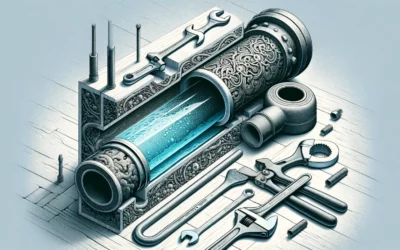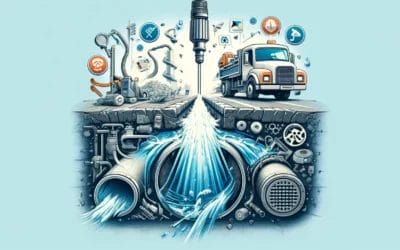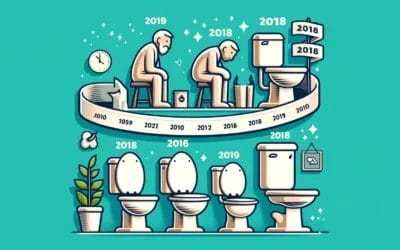Welcome all! Today’s post, “Mastering Water Pressure: Safeguard Your Plumbing & Prevent Leaks” offers a plethora of information that is not only educational but also very useful in our day to day lives. It doesn’t matter whether you are a homeowner, renter, or even someone with little to no knowledge about plumbing; this post will provide easy, step-by-step guides to help you understand how to manage water pressure effectively. By the end of this post, you’ll have learned the expert tricks to safeguarding your plumbing system and preventing unwanted leaks, potentially saving you from hefty repair costs down the road. Let’s dive in and gain this valuable knowledge!
Understanding the Importance of Water Pressure in Your Plumbing System
Water pressure, seemingly a simple concept, plays a pivotal role in ensuring the smooth operation of your plumbing system. Too high or too low water pressure can lead to leaks, water wastage, and damage to your appliances. can save you time, money, and unnecessary frustration. The most common indication of a problem is either a trickle from your faucets or a torrent that is powerful enough to spray you down.
Optimal water pressure will allow your plumbing system to function at its best. How do you know what’s optimal? While it may vary slightly due to factors such as the size of your property or the type of plumbing installed, the acceptable range for household water pressure is between 45 to 80 psi (pounds per square inch). Anything outside this range may warrant further investigation and action. Tools like a water pressure gauge can be used to regularly monitor and maintain optimal water pressure.
- Too high water pressure: If your water pressure is consistently above 80 psi, this can cause leaks in your pipes and appliances since they are under continual stress. This may also lead to a far less enjoyable shower experience as powerful jets of water can prove uncomfortable.
- Too low water pressure: Should your water pressure fall below 45 psi, this may be indicative of a leak or blockage somewhere in your system. Low water pressure significantly impacts the efficiency of your appliances and can lead to increased energy usage.
If you are not able to maintain the water pressure within the ideal range, consider getting a professional to inspect your plumbing system. This measure is crucial in preventing any serious damage from occurring. Remember, prevention is always better than cure.
| Higher than 80 psi | Risk of leaks and damage to appliances |
| Lower than 45 psi | Potential leaks or blockages, inefficient appliances |
| Between 45 to 80 psi | Optimal range for household water pressure |

The Critical Role of Water Pressure in Maintaining Healthy Plumbing
Many homeowners often overlook the role of water pressure in maintaining their plumbing systems. However, optimal water pressure is an essential element for the longevity and efficiency of your home’s plumbing. It aids in the proper functioning of water consumption appliances like showers, faucets, toilets, washing machines, and dishwashers. The absence or inadequacy of water pressure could lead to a backlog of waste water, resulting in blockages or overflow in your toilet and drains.
| Optimum water pressure range | 45 – 60 psi (pounds per square inch) |
| High water pressure symptoms | Banging pipes, frequent leaks, and high water bill |
| Low water pressure symptoms | Slow filling tubs, weak shower stream, and slow drain |
High water pressure is as harmful to your plumbing as is low pressure. It can cause excessive wear and tear on your appliances, potentially leading to frequent and costly maintenance or replacement. It may also result in leaky pipes, which can cause significant water damage over time. On the other hand, low water pressure can be equally frustrating – it may take forever to fill the bathtub or run the dishwasher, hindering your daily routine. Thus, maintaining the right balance is key.
Below, you’ll find some tips you can follow to maintain healthy plumbing:
-
- Measure Regularly: Regularly measure your home’s water pressure using a gauge.
- Pressure Reducing Valve (PRV): If your water pressure is consistently too high, installing a PRV can help lessen the pressure.
- Fix Leaks Promptly: Don’t let a small leak turn into a big problem. Fix it as soon as it appears.
- Consider Professional Help: If you’re unsure or if the problem persists, don’t hesitate to call a professional plumber.

Top Causes behind High Water Pressure in Your Pipes
-
-
- Understanding and managing water pressure in your home is crucial to prevent leaks and protect your plumbing. Many factors can contribute to high water pressure, and understanding these causes can help prevent potential damage to your water lines. There is usually a correlation between these causes and your residential area, your appliances, and even the main water supply.
-
The Main Water Supply
-
-
- The increased pressure can often stem from the main supply in your area, especially if you reside in a hilly or elevated region where the main supply needs to push water uphill. In contrast, living close to the water pump or treatment plant can also result in excessive water pressure.
-
Pipe Blockages
-
-
- Pipe blockages are another common reason for high water pressure. Over time, minerals and sediment can accumulate in your pipes, creating obstructions and causing a buildup of pressure. Regular maintenance can prevent these blockages, ensuring proper water flow and pressure.
-
Tightened Valves
-
-
- Tightened valves can also lead to high water pressure. Overly-tightened shut-off valves or a malfunctioning pressure regulator can cause an increased pressure flow. It’s highly recommended to optimize valve adjustments and ensure they are operating correctly.
-
Thermal Expansion
-
-
- Thermal expansion in your water heater can also influence your water pressure. When water is heated, it expands causing the pressure to rise. If your system lacks an expansion tank or it’s not functioning properly, it can cause fluctuations in water pressure. Taking note of these causes and regularly inspecting your home’s plumbing system can save you from potential leaks, pipe bursts, or other plumbing emergencies. So, mastering your water pressure is more than just ensuring a satisfying shower; it’s a crucial part of responsible homeownership.
-

Effective Ways to Monitor and Control Water Pressure
Understanding and managing water pressure in your home is crucial to maintaining a healthy plumbing system and preventing damaging leaks. While this may seem like a daunting task, several proven strategies can help you to effectively monitor and control water pressure.
Regular Pressure Checks
Performing regular pressure checks is a simple and effective way of monitoring water pressure. This can be done using a pressure gauge, which can be purchased from a hardware store. Attach the gauge to a faucet, turn off all water appliances and open the faucet to get a reading.
-
-
-
- Pressure Reducing Valves: If your water pressure is habitually high, consider installing a pressure reducing valve, which can be adjusted to control the pressure of the water entering your home.
- Proactive Plumbing Inspections: Frequent inspection of your plumbing system can catch potential problems early. Check for signs of leaks such as damp spots, discoloured patches on walls or decreased water pressure
- Expansion Tanks: For homes with a closed system, water pressure can increase when the water heater is running. An expansion tank can help to manage this increase in water pressure.
-
-
Use the Proper Tools
Employing the appropriate tools can make monitoring and controlling water pressure a lot easier. These tools include adjustable wrenches, pipe cutters, plumbing snake, among others. Having this toolbox at your disposal can facilitate immediate action when things go awry.
| Tool | Function |
|---|---|
| Adjustable Wrench | Aids in tightening or loosening different sizes of nuts and bolts |
| Pipe Cutter | Used for precise cuts on a pipe |
| Plumbing Snake | Helps clear clogs in plumbing pipes |
Using regular checks, preemptive inspections, the right equipment, and informed decisions on adjusting or reducing water pressure, the overall health of your plumbing system can be well-maintained, saving you time and costly repairs in the long run.

Reliable Techniques for Preventing Leaks Due to High Water Pressure
When it comes to plumbing systems, high water pressure is a common yet under-estimated threat that can wreak havoc if not appropriately tackled. It’s not just the inconvenience of leaks that’s a concern; if left unchecked, high water pressure can lead to more serious issues such as burst pipes and water damage, resulting in substantial repair costs. The good news is that by utilising a few reliable techniques, these potential issues can be effectively prevented and the integrity of your plumbing system safeguarded.
Pressure Reducing Valves: Under most circumstances, water enters your home with significant force. A pressure reducing valve (PRV) is a device that’s designed to adjust this force to a manageable level before it enters your system. If your household doesn’t already have a PRV installed, it’s worth considering getting one.
-
-
-
- Regular Pressure Checks: Just as you would keep an eye on your car’s tyre pressure or your own blood pressure, routinely checking the water pressure within your home is a practical prevention measure. This helps identify any irregularities promptly and allows for immediate corrections where necessary.
- Pressure Relief Valves: The installation of pressure relief valves on your water heater and other major appliances can offer additional protection from high water pressure. They automatically discharge water when the pressure crosses a certain threshold, acting as an important second line of defense.
-
-
| Solution | Benefit |
|---|---|
| Pressure Reducing Valves | Balances water pressure |
| Regular Pressure Checks | Early issue detection |
| Pressure Relief Valves | Protection and prevention |
By integrating these techniques into your regular plumbing maintenance routine, you can effectively manage high water pressure and consequently prevent destructive leaks. Remember, preserving your plumbing system is not just about addressing issues as they arise, but also about preventing potential ones. As the old saying goes, prevention is always better than a cure.

Exploring the Best Tools to Manage Water Pressure and Safeguard Your Plumbing
Managing water pressure
-
-
- within your home is not only essential for the life expectancy of your plumbing system, but also for your everyday comfort. There are various tools at your disposal that are designed to control and maintain the water pressure in your plumbing system. A
-
pressure regulator
-
-
- , often installed at the meter, reduces the incoming water pressure to a safe level before it even reaches your plumbing system.
-
Pressure relief valves
-
-
- prevent too much pressure from building up in your boilers and hot water heaters. Implementing these tools can help increase the longevity of your pipes and reduce the likelihood of leaks. For optimal maintenance of your plumbing system, it’s important to
-
monitor the water pressure
-
-
- on a regular basis. Products like
-
water pressure gauges
-
-
- can be beneficial in this regard. They allow you to diagnose high or low water pressure, find out if there are any leaks in your system, or even verify whether your pressure regulator is doing its job properly. Another great tool is a
-
smart water monitor
-
-
- , which not only tracks water usage and measures pressure, but also sends an alert if leaks are detected, allowing for quick mitigation of damage.
-
| Tool | Function | Benefits |
| Pressure Regulator | Reduces incoming water pressure | Safeguards plumbing system, reduces likelihood of leaks |
| Pressure Relief Valves | Prevents pressure build up in boilers and water heaters | Keeps your plumbing system safe |
| Water Pressure Gauges | Diagnoses high or low water pressure, checks for leaks | Aids in maintaining a healthy water pressure level |
| Smart Water Monitor | Tracks water usage, measures pressure, detects leaks | Keep tabs on water pressure and consumption, prevent water damage |
Final Thoughts
-
- In conclusion, understanding and mastering your home’s water pressure is an invaluable skill for every homeowner. It not merely preserves the integrity of your plumbing system but equally plays a crucial role in preventing costly and damaging leaks. Now that you are equipped with this knowledge and these practical tips, you can take proactive steps towards maintaining optimal water pressure and safeguarding your plumbing. Remember, it’s better to prevent problems than to deal with their aftermath. Don’t hesitate to consult with professionals if you find any irregularities or if anything seems outside of your expertise; this safeguarding process is also part of responsible homeownership. Keep your plumbing system healthy and your home leak-free, and enjoy the peace of mind that comes with being in control of your water pressure.









